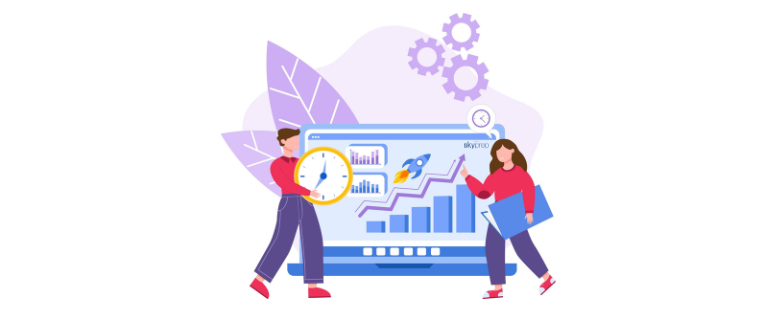
10 Ways to Improve the Employee Onboarding Experience
Creating a welcoming and efficient employee onboarding experience is crucial for setting the stage for employee success and employee engagement. A well-structured onboarding process can dramatically influence new hires’ perceptions of your company, enhance their productivity, and reduce turnover. In this blog, we’ll explore 10 effective ways to improve the employee onboarding experience, ensuring that your new team members feel valued, supported, and prepared to hit the ground running from day one. Whether you’re a seasoned HR professional or a manager looking to refine your employee onboarding strategy, these insights will help you cultivate a seamless and impactful integration process.
1. Initiate PreBoarding Activities
Begin the employee onboarding process before your new hire’s first day. Send a welcome email outlining what they can expect on their first day, including a schedule, dress code, and any necessary forms. Providing access to an onboarding portal where they can complete paperwork, watch welcome videos, and familiarize themselves with the company culture and mission can help alleviate first-day jitters.
2. Personalized Welcome
Tailor the onboarding experience to each new hire. Personalized touches, such as a welcome package with company merchandise, handwritten notes from team members, or a custom desk setup, can make new employees feel valued. These small gestures help build a positive initial impression and foster a sense of belonging from day one.
3. Structured Orientation Program
Develop a detailed employee orientation program that covers essential information about the company, its values, mission, and culture. Include interactive sessions that introduce the new hire to different departments, key policies, and procedures. Ensure that the employee orientation is engaging and interactive to keep the new hire interested and involved.
4. Create Mentorship Systems
Pair each new employee with a mentor who can guide them through their initial weeks. This peer support system provides a go-to person for questions, offers insights into the company culture, and fosters social integration. A dedicated mentor helps new hires feel supported and can significantly shorten their learning curve.
5. Comprehensive Employee Training Plans
Implement a robust employee training plan that is tailored to the role and responsibilities of the new hire. This should include both formal training sessions and on-the-job learning opportunities. Mix up the formats with videos, eLearning modules, hands-on tasks, and virtual classrooms to keep the employee training engaging and effective. Regular check-ins can ensure the new hire is on track and can address any learning gaps promptly.
6. Setting Clear Expectations
Clearly outline job responsibilities, performance expectations, and metrics for success from the get-go. Providing new hires with a detailed job description and measurable performance goals helps them understand what is expected and how they can succeed. Schedule regular one-on-one meetings to discuss progress and provide feedback.
7. Integrating a Learning Management System (LMS)
Utilize a Learning Management System (LMS) to streamline and enhance the training aspect of the onboarding process. An LMS allows you to deliver structured and interactive training modules that new hires can complete at their own pace. This technology can host everything from compliance training to role-specific courses, providing a centralized location for all learning materials. Features such as quizzes, progress tracking, and certificates of completion ensure that new employees are absorbing the necessary information effectively. Additionally, an LMS can offer forums and chat functions for new hires to pose questions and engage with their peers and trainers, fostering a more interactive and cohesive learning environment.
8. Company Culture Immersion
Immerse new employees fully into your company culture by involving them in team-building activities, social events, and collaborative projects from the outset. Encourage participation in company-sponsored events, virtual meet-and-greets, and informal gatherings. This not only helps new hires develop relationships but also gives them a sense of how the company operates and what it values.
9. Feedback Loops
Establish a system for gathering feedback from new hires about their onboarding experience. Surveys, one-on-one meetings, and focus groups can provide valuable insights into what is working and what needs improvement. Act on this feedback to continually refine your onboarding process and demonstrate to new hires that their opinions are valued and impactful.
10. Continual Support and Resources
Employee onboarding doesn’t end after the first week or month; ongoing support through regular check-ins, additional training, and career development opportunities is crucial. Utilizing a Learning Management System (LMS) can serve as a comprehensive repository of resources, including company policies, training modules, and knowledge bases, allowing new hires to access information at their convenience and continue their learning journey well beyond the initial employee onboarding period.
By implementing these strategies, you can create an onboarding experience that equips new employees with the knowledge and skills they need to succeed while fostering a sense of belonging and engagement that benefits both your new hires and your organization as a whole. A thoughtful and well-executed employee onboarding process can lead to improved job satisfaction, higher retention rates, and a more cohesive and motivated workforce. The goal is to make every new employee feel like a valued part of the company from day one; by investing in their success and well-being from the start, you’re building a strong foundation for a prosperous and harmonious workplace.

.svg)









Leave a Reply